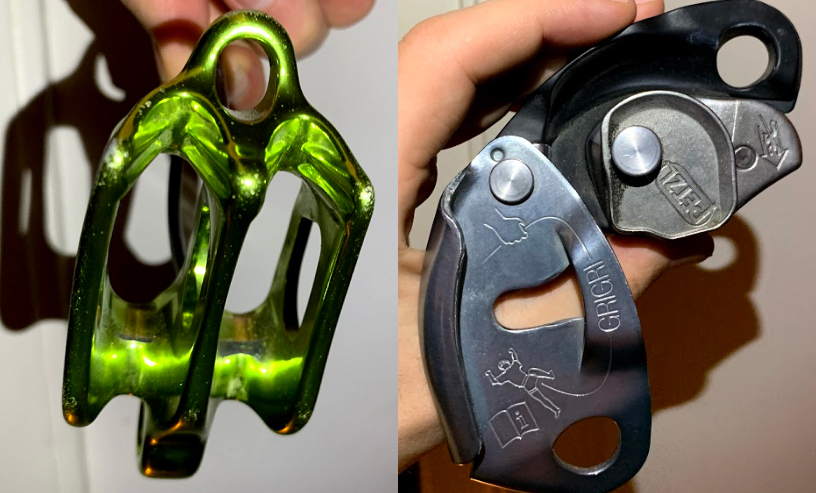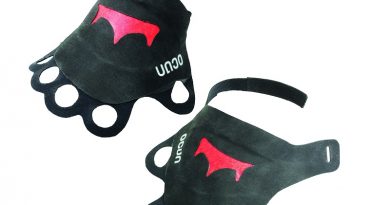If you’re a dedicated climber, your rope is probably more than “just a rope.”
After all, you two have been on quite the adventures together. Still, there comes a time when all good things must end. There’s a point in every climber’s journey where he must retire his trusted rope and replace it with a newer, stronger option.
But how do you know when the time is right? Replacing your rope too often can be expensive, but waiting too long has dangerous implications. If you’re a beginner or occasional climber wondering when the best time to replace your rope is, this guide is for you.
In this review, we’ll cover everything you need to know about rope replacement so that you never have to worry about using a defunct rope. Keep reading to find out important red flags, frequency of use information, and more!

Frequency of Use
As with any piece of equipment, the frequency with which you use your climbing rope will largely determine when it’s time to upgrade. Though the ultimate decision of when to retire your rope can only be made by yourself, there are some general patterns and guidelines you can follow for reference.
For starters, check the packaging your rope comes with on purchase. By law, manufacturers are required to include a manual with recommended discard guidelines. Generally, companies will recommend that climbers should discard their ropes after three to five years of use.
But how accurate is this information? According to the International Mountaineering and Climbing Federation (UIAA), these guidelines are generally conservative but could in fact be overstatements depending on the specific frequency with which you use your rope.
For this reason, let’s examine some general guidelines for rope retirement.
IMPORTANT: The numbers below merely intended as guidelines. The amount of falls a rope takes and the impacts it has to endure can change the numbers mentioned below. Storing conditions and dirt influence the lifespan of a rope as well. Always use common sense and inspect your rope carefully before climbing.
Never Used Ropes Can Last About 10 Years
So you’ve got that rope in your garage. You know, the one you bought four years ago when you just knew you were going to become an expert rock climber but then never even took out of the bag.
Well, now you are ready. You’ve read the rock climbing guides. You’ve talked with friends who are into the sport. You’ve got a great support system, and you are ready to hit the rocks.
The only question is—will your rope work? Fortunately, unused ropes have an average life expectancy of up to ten years, so long as they are not exposed to external damage. This means that your four-year-old, still-in-the-bag rope is likely just as ready to climb as you are.
Ropes Used Twice per Year Last 7 Years
If you’re the very infrequent climber and climb only twice a year, your rope will be functional for up to seven years, barring any outside damage. This means that you don’t have to worry about replacing your rope every few years so long as you use, store, and treat it properly.
Monthly usage lasts You Up To 5 years
Let’s say you climb a little more than that, though. Will your rope still hold up if you climb once per month?
Luckily, your rope can live up to five years, even with the occasional climb. Still, that’s only if your rope isn’t damaged by various external factors.
Used Several Times per Month ~ 3 Years
If you climb several times a month, every other weekend, perhaps, what are your ropes chances of long-term survival? A rope that’s used several times a month can still be healthy and functional for a duration of up to three years.
Not bad. This means you can get your climbing fix multiple times a month without constantly replacing your rope.
Used Weekly ~ 1 Years
If you’re a more serious climber and like to climb at least once a week, it’s advised that you replace your rope once a year, barring any unforeseen damage. While this may seem expensive, it’s worth it for any climber who’s dedicated to the sport.
Ropes Used Daily Should be replaced more often
If you’re that climber who just can’t stay away from the rocks, you can expect to change your rope at a much greater frequency than the average rock climber. Almost daily use of your rope necessitates rope replacement in less than a year of purchase. If you’re looking to go full-swing into rock-climbing, it’s best that you prepare to have these expenses in your budget.
Following Heavy Impact (Regardless of Usage Frequency)
If you endure a substantial fall while climbing, it’s recommended that you retire your rope immediately. According to UIAA safety standards, ropes can sustain invisible core damage. This means you shouldn’t take a chance with a rope that’s endured a particularly nasty fall—even if the rope has hardly been used. Changing your rope can help you stay safe during your rock climbing trip.
Keeping this information in mind, it’s important that you inspect your rope before and after each use. This is the only way to make sure your rope is up to par and can ensure you have a good climb—every time.
Red Flags
Knowing this, what red flags should you look out for when you suspect that your rope is reaching its limit? Fortunately, it’s not very difficult to tell when your rope is on its last legs.
Let’s examine the various warning signs that your rope is becoming unusable one-by-one.
Dirty Ropes Need to be Replaced Significantly More Often
It’s okay if your rope is a little dirty. After all, you’re likely climbing outside. It’s only natural if your rope doesn’t look fresh out of the pack. Still, if your rope looks like it was used to rescue an innocent civilian from a sinking mud pit, there’s a good chance it’s too dirty to use.
The presence of dirt can reduce the effectiveness of your rope by twenty to forty percent. With this in mind, you should immediately replace your rope if you suspect it’s too dirty to use.
Rope Stiffness
A stiff rope is one that’s lost its elasticity. Of course, this is a bad thing. If your rope isn’t elastic, it won’t be able to catch your falls or perform to the level it should.
Therefore, if your rope feels stiff, consider changing it immediately. It’s simply not safe to climb on a stiff rope, so even if it means cutting your vacation a little short, retire your rope and purchase a new one.
Flat Spots
There are two basic components to your rope: the core and the sheath. The core is the foundation of your rope and holds the rope’s strength and elasticity. The sheath is the outer coating that protects this core from damage.
If you notice deformities in the core of your rope, such as flattened areas or bends, it’s time to replace your rope. Ropes with deformed cores simply cannot function well and might not handle the pressure of a climber or the impact of a fall.
Core Shots
Similarly, if the core of your rope is visible at all (in what are called core shots), it’s time to consider another rope. Ropes with visible cores are subject to more external damage and have significantly-reduced life expectancies.
What Causes Ropes to Wear Out?
So now you know (generally speaking) how often to replace your rope and what to look for in rope replacement, but what exactly is it that causes your rope to wear out?
Wear and tear? Age?
Knowing what factors negatively impact your rope’s health is a good first step to giving your rope the protection it needs to live up to its potential. With that being said, let’s take a look at a few of the factors that may influence the health of your rope.
Water
Water (or moisture in general) is a leading cause of rope damage. Exposure to water or other liquid material can stiffen your rope and lessen its effectiveness.
For this reason, many companies offer “dry rope” options that are more resistant to water or moisture damage. It’s important to keep in mind that these ropes aren’t immune to water damage, however. For this reason, it’s best to keep your rope—no matter the type—stored safely away from water or liquid materials, preferably in an airtight container.
Dirt
As mentioned before, dirt can get into your rope and lessen its efficiency. For this reason, it’s important not to throw your rope on the ground or simply leave it outside. Dirt (or any foreign particle, for that matter) coming into contact with your rope’s core can lead to deformities and a more dangerous climb.
Soaps
Unfortunately, washing dirt off your rope isn’t as easy as it sounds. Many soaps contain harsh chemicals that can damage your rope’s nylon or core. For this reason, it’s important to be picky about what you use to clean your rope.
The UIAA recommends pH neutral cleaning agents (such as natural soap flakes) or product-specific cleaning materials to clean your climbing rope. Following these recommendations can go a long way to preserving your rope’s health, particularly as some popular options such as Woolite have been found to decrease rope strength from anywhere between nine to twelve percent.
If you’re not sure what to use on your rope, consider using lukewarm water with no soap at all. This can remove many of the dirtied areas of your rope without damage. In order to do this, you can use a cleaning brush, but be careful not to brush too hard, as this can also wear out your rope.
Sunlight
Exposing your rope to direct sunlight or intense UV radiation can wear out its outer sheath and cause damage to your rope’s core. For this reason, it’s always advised that you keep your rope stored away from sunlight, preferably in an airtight container away from moisture.
Obviously, if you are climbing outdoors, it’s impossible to avoid sunlight altogether. For this reason, it’s even more important to limit your rope’s exposure to UV radiation so that you can maximize its lifespan.
Does Falling Wear My Rope Out?
Keeping these common damaging agents in mind, let’s move on to a very common question among beginning rock climbers. Namely, “Does falling wear my rope out?”
In order to answer this question, we’ll have to take a look at the forces in action when a climber falls and how that impacts his rope.
Every climbing rope you will buy is assessed and given a fall rating by the International Mountaineering and Climbing Federation (UIAA). This fall rating tells you on average how much impact a rope can take in the event of a fall. In general, falls that factor in with a rating of 1.77 or higher are considered “high-factor” falls.
But how is this factor calculated? Let’s go back to physics class with a basic formula. In essence, a fall rating is determined by the distance fallen divided by the amount of rope out.
What does this mean, exactly? Let’s say that you fell eight feet with twelve feet of rope out. If this is the case, your fall rating is .67. That’s not a high-factor fall, which means it’s likely well within your rope’s comfort zone.
Imagine, however, that you fall eighteen feet with nine feet of rope out. In this case, your fall rating becomes two. Most ropes come with a label that says, “Can withstand X amount of UIAA falls.” This label in essence tells you the number of falls your rope can handle past the 1.77 threshold the UIAA deems too high to be safe.
If you meet this number of UIAA falls, it’s time to retire your rope. In all likelihood, however, you will rarely exceed the UIAA threshold, as a majority of falls fall well within a factor of 1 or around that general area. Still, it’s important to always inspect your rope if you have a particularly nasty fall and to discard it if it shows any abnormal signs of wear and tear.
Can I Still Use My Rope if It Has Sheath Slippage?
Maybe you’ve noticed that the ends of your rope aren’t as protected as they once were.
If this is the case, it’s likely that the outer sheath on your rope is starting to slip.
If you’re like some climbers, you may think, “No big deal. The rope will be fine, right?” Unfortunately, sheath slippage that starts on the ends of your rope will quickly spread across your rope’s length.
Not only does this expose the core of your rope to damage and reduce your safety, but it can also make it more difficult to use in rappelling and belaying devices.
For this reason, it’s best to replace your rope, even if the sheath slippage seems minor. Doing so can maximize your safety and give you the most out of your rock climbing experience.
Can My Rope Lose Strength Even if I Don’t Use It?
As you might guess, the answer to the popular question “Can my rope lose strength even if I don’t use it?” is “Absolutely, yes!”
As discussed, ropes aren’t just subject to the frequent damage of wear and tear or friction. Rope health is also influenced by a variety of non-climbing factors, such as sunlight and moisture. For this reason, it’s important to always check your rope out before you use it. Remember to adhere to the above Mammut North America frequency of use guidelines for ropes that aren’t regularly used or have never been used at all. Replace any rope that is damaged, stiffened, or otherwise unfit to climb.
The Bottom Line
At some point, we all must say goodbye.
If your rope is damaged, dirty, or otherwise not fit to use, it’s time to replace it with a better option. Though it may be painful to discard the rope you’ve used on so many memorable occasions, you’ll feel much better when you have that new, fresh, and safe rope in your hands and ready to go.
Adhering to the information in the guide above can get you one step closer to that safe, unforgettable climb that you’ve been dreaming of. Remember that this guide is only meant for reference. It’s up to you to make sure that your climbing ropes are fit for use. If you suspect that your rope is not climbing-ready, replace it with a safe and quality option.







Regarding discarding old ropes, I would also advise getting in touch with your local alpine / climbing club to know what to do with your old rope. Most of it can be recycled or pooled together and sent for second usage, such as farming/cattle activities in developing countries, where your old rope will find a second life and make a local farmer happy.
Thank you for your comment FL! I think that’s a great tip – one that is much in the spirit of what this world needs regarding recycling / the circular economy. Thanks for sharing 🙂